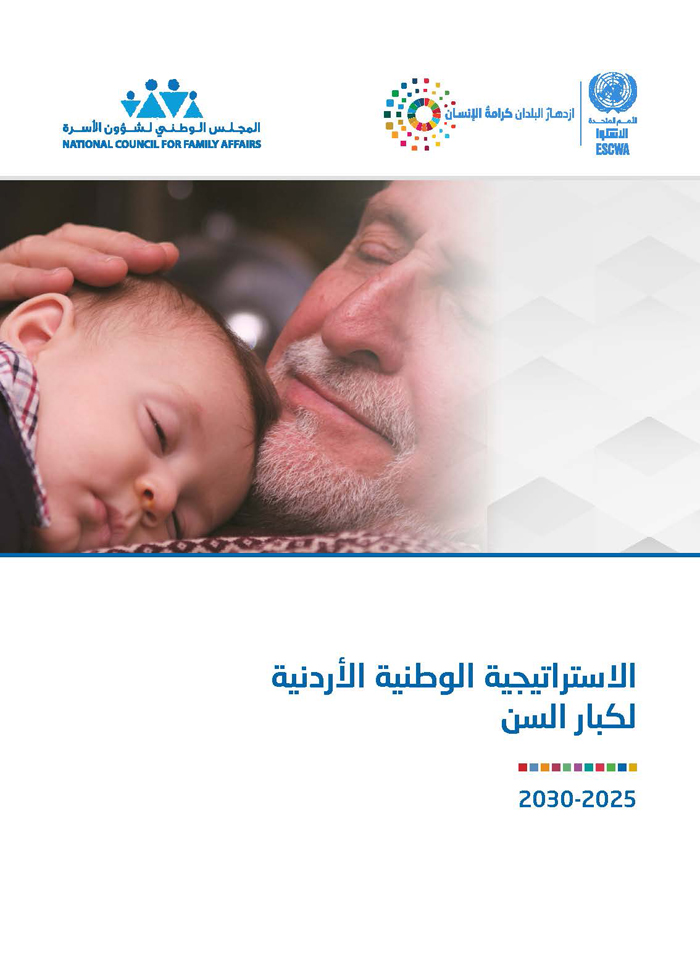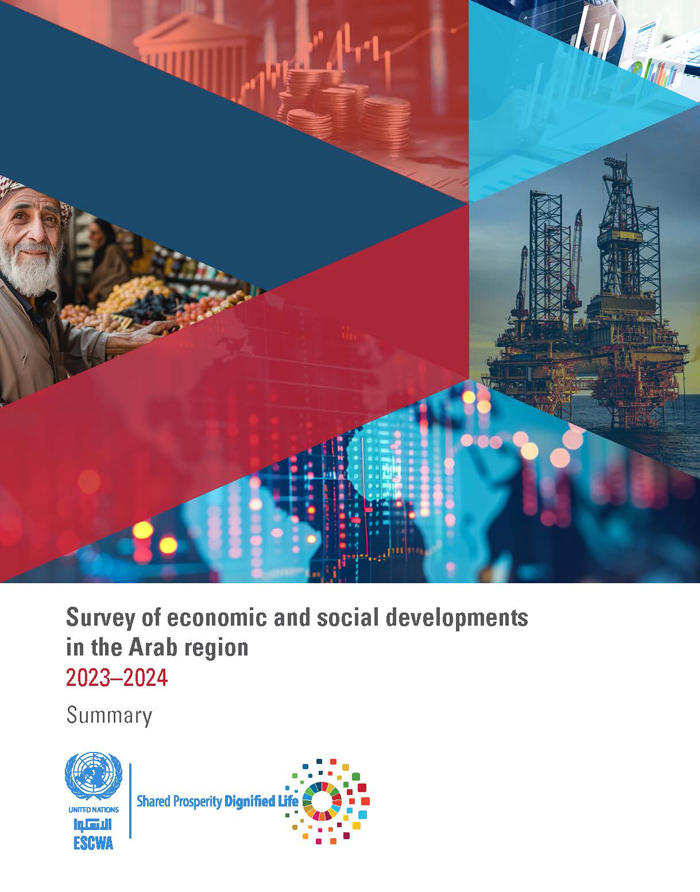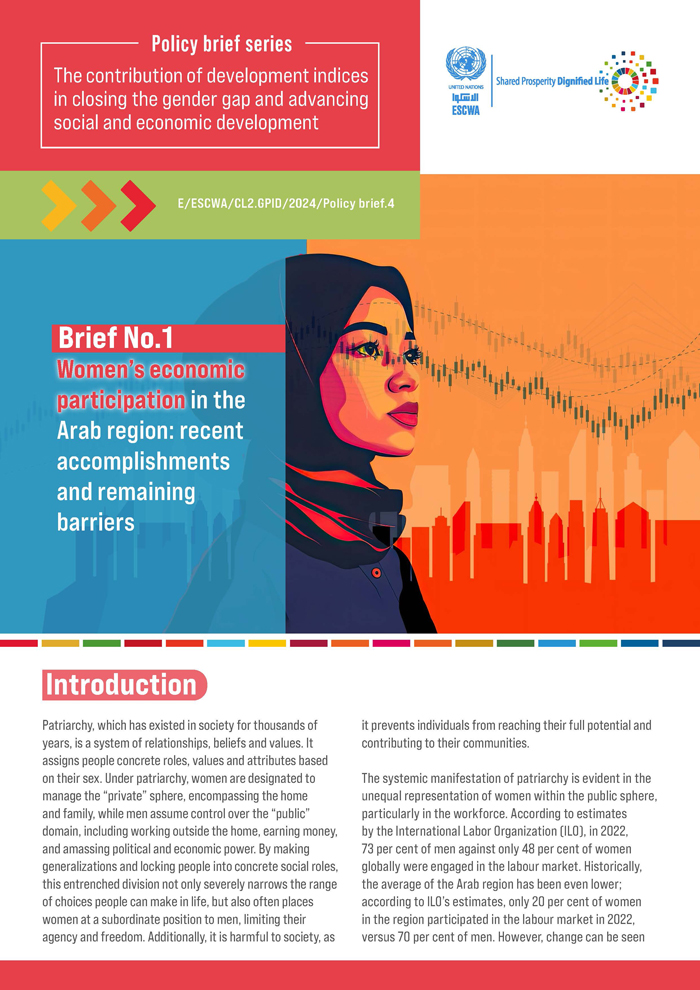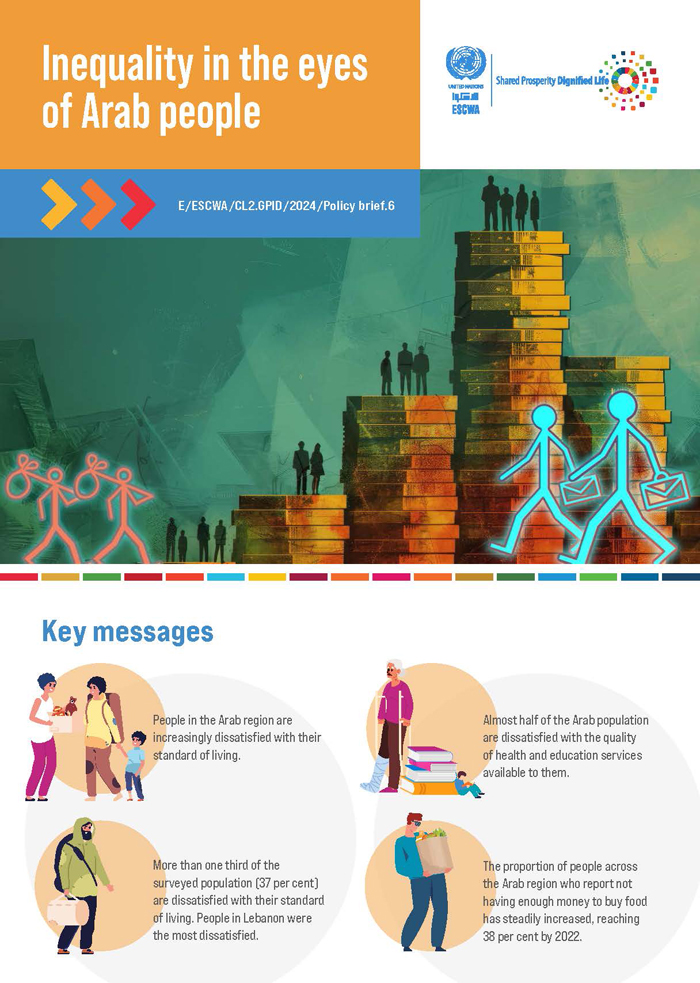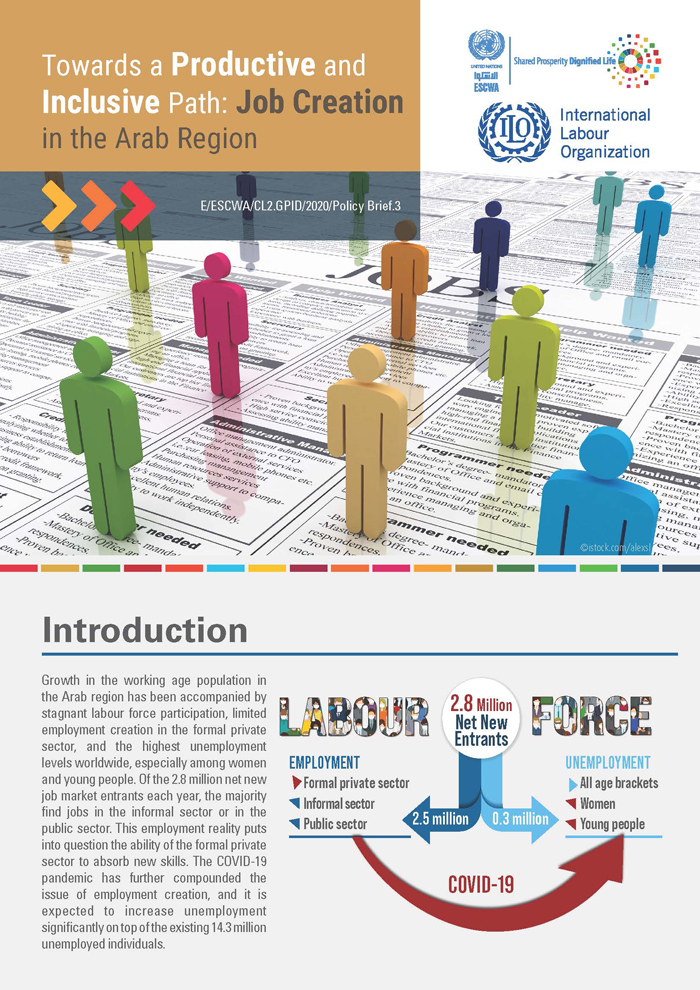
ESCWA Publication: E/ESCWA/CL2.GPID/2020/POLICY BRIEF.3
Country: Arab region
Publication Type: Policy briefs
Cluster: Shared Economic Prosperity
Focus Area: Gender equality, Future of employment
Initiatives: Job creation, Women’s economic empowerment
SDGs: Goal 5: Gender Equality, Goal 8: Decent Work and Economic Growth
Keywords: Arab countries, Employment, Private sector, Informal sector, Supply and demand, Women, Covid-19
Towards a productive and inclusive path: Job creation in the Arab region
August 2021
Chapter 1 of this report provides an overview of the Arab labor market supply. It investigates demographic shifts, education and labor market trends, as well as productivity using World Development Indicators and ILOSTAT. The report shows that the Arab region needed around 7.4 million jobs even before the COVID pandemic in 2019 to insure leaving no one behind. The number of required jobs is also expected to increase in the upcoming 10 years if one looks at the changing shape of the Arab world age pyramid. At the same time, created jobs in the region might not necessary be matched with available skills where training systems and school curricula are not in line with the needs of the labor market.
This supply-side profiling of the labor market is complemented in Chapters 2 by an in-depth analysis of the demand for jobs using the Enterprise Performance Survey (ES). This chapter provides an overview of the employment demand and productivity status of the formal private sector among non-oil Arab states and provides a benchmark against other regions. The report suggests the following: the formal private sector has a high inequality between capital owners and income earners; the degree of association between employment demand and innovations is sector dependent; unlike the rest of the world, employment elasticity in the formal private sector is considered low and significantly lower than the average income group for most Arab states; and political stability is the main concern for private sector firms in the Arab region, where some firms are more resilient to political uncertainty than others.
Chapter 3 examines the findings of previous chapters from a gender perspective which reveals that women in the region are generally clustered in quasi-public firms as well as in sectors that are deemed “female-friendly.” The chapter also shows that computer-related fields and manufacturing have the highest female shares of full-time employment among the examined sectors. Central to the findings of the chapter is that export-oriented firms have become a good source of employment for women. Hence, the growth of such firms could facilitate a reduction in gender disparities within Arab labor markets. Attracting foreign investment may boost private-sector employment and is associated with additional women employment. However, for this to be sustained, there is a need to address gender disparities by, first, challenging prevalent socio-cultural perceptions to allow women’s labor mobility and access across the full range of economic sectors, including capital-intensive fields, and, second, reforming labor laws to encourage female economic participation and employment in the private sector.
Chapter 4 shows the way forward to design national policies for more inclusive and decent employment creation at the medium and the long terms. Cognizant of the fact that policy makers are also in need of solutions to short term challenges, especially the challenge of how to respond to the COVID-19 crisis, the report proposes a number of policy interventions drawn from recent policy briefs by the ILO and ESCWA that argue the need to expand current systems of social protection and support businesses to maintain employment. The chapter also suggests that, in some countries, implementing employment guaranteed schemes may be a worthy policy option to consider. In between these short- and longer-term policy recommendations, Chapter 4 also devotes some attention to the question of how to support SMEs in particular, especially in their ability to innovate, grow and employ more.
Related content
Gender equality
, Future of employment
,
Chapter 1 of this report provides an overview of the Arab labor market supply. It investigates demographic shifts, education and labor market trends, as well as productivity using World Development Indicators and ILOSTAT. The report shows that the Arab region needed around 7.4 million jobs even before the COVID pandemic in 2019 to insure leaving no one behind. The number of required jobs is also expected to increase in the upcoming 10 years if one looks at the changing shape of the Arab world age pyramid. At the same time, created jobs in the region might not necessary be matched with available skills where training systems and school curricula are not in line with the needs of the labor market.
This supply-side profiling of the labor market is complemented in Chapters 2 by an in-depth analysis of the demand for jobs using the Enterprise Performance Survey (ES). This chapter provides an overview of the employment demand and productivity status of the formal private sector among non-oil Arab states and provides a benchmark against other regions. The report suggests the following: the formal private sector has a high inequality between capital owners and income earners; the degree of association between employment demand and innovations is sector dependent; unlike the rest of the world, employment elasticity in the formal private sector is considered low and significantly lower than the average income group for most Arab states; and political stability is the main concern for private sector firms in the Arab region, where some firms are more resilient to political uncertainty than others.
Chapter 3 examines the findings of previous chapters from a gender perspective which reveals that women in the region are generally clustered in quasi-public firms as well as in sectors that are deemed “female-friendly.” The chapter also shows that computer-related fields and manufacturing have the highest female shares of full-time employment among the examined sectors. Central to the findings of the chapter is that export-oriented firms have become a good source of employment for women. Hence, the growth of such firms could facilitate a reduction in gender disparities within Arab labor markets. Attracting foreign investment may boost private-sector employment and is associated with additional women employment. However, for this to be sustained, there is a need to address gender disparities by, first, challenging prevalent socio-cultural perceptions to allow women’s labor mobility and access across the full range of economic sectors, including capital-intensive fields, and, second, reforming labor laws to encourage female economic participation and employment in the private sector.
Chapter 4 shows the way forward to design national policies for more inclusive and decent employment creation at the medium and the long terms. Cognizant of the fact that policy makers are also in need of solutions to short term challenges, especially the challenge of how to respond to the COVID-19 crisis, the report proposes a number of policy interventions drawn from recent policy briefs by the ILO and ESCWA that argue the need to expand current systems of social protection and support businesses to maintain employment. The chapter also suggests that, in some countries, implementing employment guaranteed schemes may be a worthy policy option to consider. In between these short- and longer-term policy recommendations, Chapter 4 also devotes some attention to the question of how to support SMEs in particular, especially in their ability to innovate, grow and employ more.
